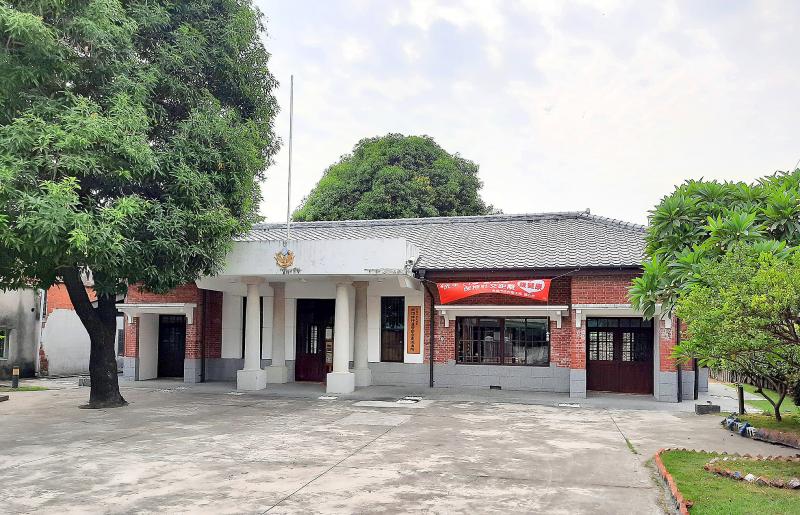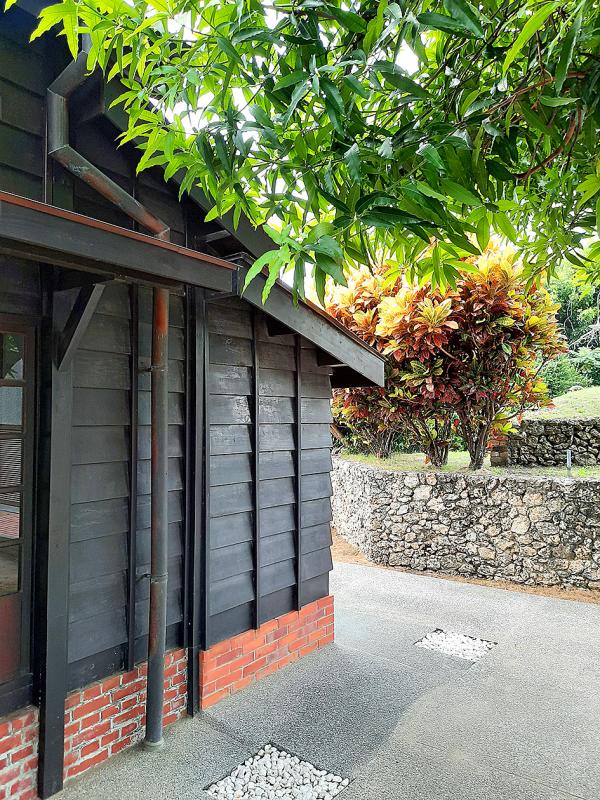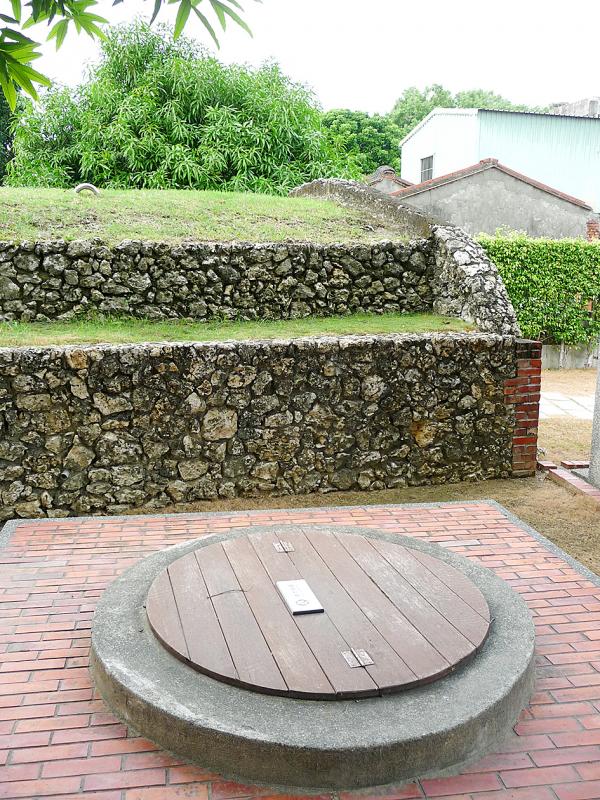When Japan seized Taiwan in 1895, establishing control of the island’s major settlements and harbors was fairly straightforward. But imposing colonial rule on people who’d never encountered effective modern government was altogether more difficult.
If all you have is a hammer, everything looks like a nail. Japan’s initial efforts to govern Taiwan therefore relied on the firepower and mobility of an army that had needed less than four months to sweep aside opposition to the takeover.
According to Gunnar Abramson, writing in PSU McNair Scholars Online Journal in 2004, the first governors-general appointed by Tokyo, “instituted a large-scale policy of bandit suppression [using] military forces to patrol rural areas and police to patrol the cities.”

Photo: Steven Crook
Abramson says that the colonial regime’s draconian methods backfired. The Japanese eventually recognized that their approach, “did little to dent criminality or anti-Japanese agitation… Sometimes the tactics transformed once placid areas into locales rife with anti-colonial sentiment.”
It was into this morass that Goto Shinpei stepped. Goto, who served as chief civil administrator in the colonial government from 1898 to 1906, believed that (to use Abramson’s words) “perpetuating native traditions where they happened to converge with Japanese interests” would help avoid antagonizing the population of Taiwan. Building on the Qing Dynasty’s baojia (保甲) system of neighborhood and community responsibility, he instituted what became known as the Hoko system.
The Hoko system became a mechanism through which the authorities kept tabs on the population, communicated new laws and regulations, tried to rehabilitate opium smokers, and encouraged residents to report infectious diseases and suspicious-looking outsiders, while collecting taxes and issuing fines. A failure to obey the rules could bring punishment for the entire ko (usually 10 neighboring households). Whenever a person was convicted of a serious crime, the others in his ko were fined for their “negligence.”

Photo: Steven Crook
Integrating the Hoko system with local police made both more effective. During Goto’s time in Taiwan the colonial government established police stations in every part of the island.
In the highlands, the police had additional duties. They operated schools that were part of the colonial authorities’ efforts to turn Aborigines into compliant subjects (“savage children’s educational institutes”), controlled the rifles which Aboriginal men used for hunting and operated barter stations where Aborigines could exchange mountain produce for cloth, needles, salt and other goods.
A few Japanese-era police stations survive. The one at Neiwan Township (內灣) in the hills of Hsinchu is authentic yet tatty. The two profiled in this article are far more photogenic.

Photo: Steven Crook
DINGLING ZIHBIAN POLICE STATION
Kaohsiung’s Linyuan District (林園) is notoriously industrial, but in the old town center there’s a carefully restored former police outpost.
When Dinglin Zihbian Police Station (頂林仔邊派出所) was established in 1898, this was a rural area. Within a few years, however, the neighborhood had gained a market, a school and a local government office.

Photo: Steven Crook
In 1909, the powers that be decided to rebuild the police station. Eighty-one local worthies donated money to help pay for the new station, and their names are listed in the small exhibition inside the brick-and-concrete front building.
In this respect, Japanese rule wasn’t so different from the Qing era that had preceded it. In both periods, the wealthy were encouraged to subsidize public works
The footprint of structures on this site changed several times between 1909 and the most recent renovation, which was completed in 2012. Only the front building has remained more or less the same. The pond behind it had been filled in by 1981.
Until 1933, when the roster was expanded, just two police officers were assigned to the station. Usually, the senior of the two was Japanese.
The lack of parking and internal space caused Linyuan’s police unit to move to nearby Linyuan North Road (林園北路) in 1989. Parts of the old station then served as a police dormitory.
Compared to what can be seen inside Yuanlin Police Museum (員林警察故事館, see “The landmarks of Yuanlin” in the Aug. 9, 2019, Taipei Times), the displays in Dinglin Zhibian Police Station are disappointing — but the two single-story buildings open to the public are splendid examples of Japanese architectural elegance.
The rear building is mostly wooden. Taller people should watch their heads when exploring the tatami-floored interior; the doorways date from a time when even members of the police force were usually shorter than 1.7m.
Within the grounds there’s also an old well and an air-raid shelter. The latter, which was built using coral stone, also served as the station’s cellblock. During the colonial era, the police were legally empowered to hold suspects and troublemakers without charge for up to 29 days.
Directions
Take the Kaohisung Metro to Siaogang (小港) at the southern end of the Red Line, then a #R3 bus into Linyuan. Get off at Singfu Park (幸福公園), then walk north along Fusing Street (福興街) for 500m. You’ll see the former police station on your left at number 97. It’s open from 10am to 5pm Tuesday to Friday, and 9am to 5pm on weekends. Admission is free.
SANTIAO POLICE STATION
Unlike Dinglin Zihbian Police Station, Santiao Police Station (三條派出所) in Changhua County’s Sijhou Township (溪州鄉) has never ceased functioning as a law enforcement outpost.
This quaint chalet-like structure has stood here since 1933, when a local landowner surnamed Liao (廖) handed the plot to the authorities. According to official records, he agreed to its use by the police permanently and without compensation.
Liao’s descendants disputed this, and from 1961 they filed lawsuits seeking the land’s return. Finally, in 2009, a court agreed with the plaintiffs. If this had been a piece of farmland, the handover would likely have been completed soon thereafter. However, the station, which was built using top-grade hinoki cypress, and which came through the 921 Earthquake undamaged, is said to be the only colonial-era wooden official building surviving in Changhua County.
Alarmed by the prospect of the station being demolished, activists lobbied Changhua County Government to declare the building a relic protected by the Cultural Heritage Preservation Act. Liao’s descendants seem to have been placated (no new lawsuits have been reported, at least) while heritage enthusiasts are breathing more easily. Santiao Police Station may yet see its 100th anniversary.
Directions
The station is on the corner of Jhongyang Road (中央路) Section 2 and Nanjiujia Lane (南九甲巷). The nearest bus stop, Santiao Elementary School (三條國民小學), is served by the thrice-daily #8A service, which can be boarded at both the conventional train station in Tianjhong (田中) and Changhua High-Speed Railway Station. No other public transportation stops within 1.3km of the police station.

This month the government ordered a one-year block of Xiaohongshu (小紅書) or Rednote, a Chinese social media platform with more than 3 million users in Taiwan. The government pointed to widespread fraud activity on the platform, along with cybersecurity failures. Officials said that they had reached out to the company and asked it to change. However, they received no response. The pro-China parties, the Chinese Nationalist Party (KMT) and Taiwan People’s Party (TPP), immediately swung into action, denouncing the ban as an attack on free speech. This “free speech” claim was then echoed by the People’s Republic of China (PRC),

Exceptions to the rule are sometimes revealing. For a brief few years, there was an emerging ideological split between the Democratic Progressive Party (DPP) and Chinese Nationalist Party (KMT) that appeared to be pushing the DPP in a direction that would be considered more liberal, and the KMT more conservative. In the previous column, “The KMT-DPP’s bureaucrat-led developmental state” (Dec. 11, page 12), we examined how Taiwan’s democratic system developed, and how both the two main parties largely accepted a similar consensus on how Taiwan should be run domestically and did not split along the left-right lines more familiar in

Specialty sandwiches loaded with the contents of an entire charcuterie board, overflowing with sauces, creams and all manner of creative add-ons, is perhaps one of the biggest global food trends of this year. From London to New York, lines form down the block for mortadella, burrata, pistachio and more stuffed between slices of fresh sourdough, rye or focaccia. To try the trend in Taipei, Munchies Mafia is for sure the spot — could this be the best sandwich in town? Carlos from Spain and Sergio from Mexico opened this spot just seven months ago. The two met working in the

Many people in Taiwan first learned about universal basic income (UBI) — the idea that the government should provide regular, no-strings-attached payments to each citizen — in 2019. While seeking the Democratic nomination for the 2020 US presidential election, Andrew Yang, a politician of Taiwanese descent, said that, if elected, he’d institute a UBI of US$1,000 per month to “get the economic boot off of people’s throats, allowing them to lift their heads up, breathe, and get excited for the future.” His campaign petered out, but the concept of UBI hasn’t gone away. Throughout the industrialized world, there are fears that